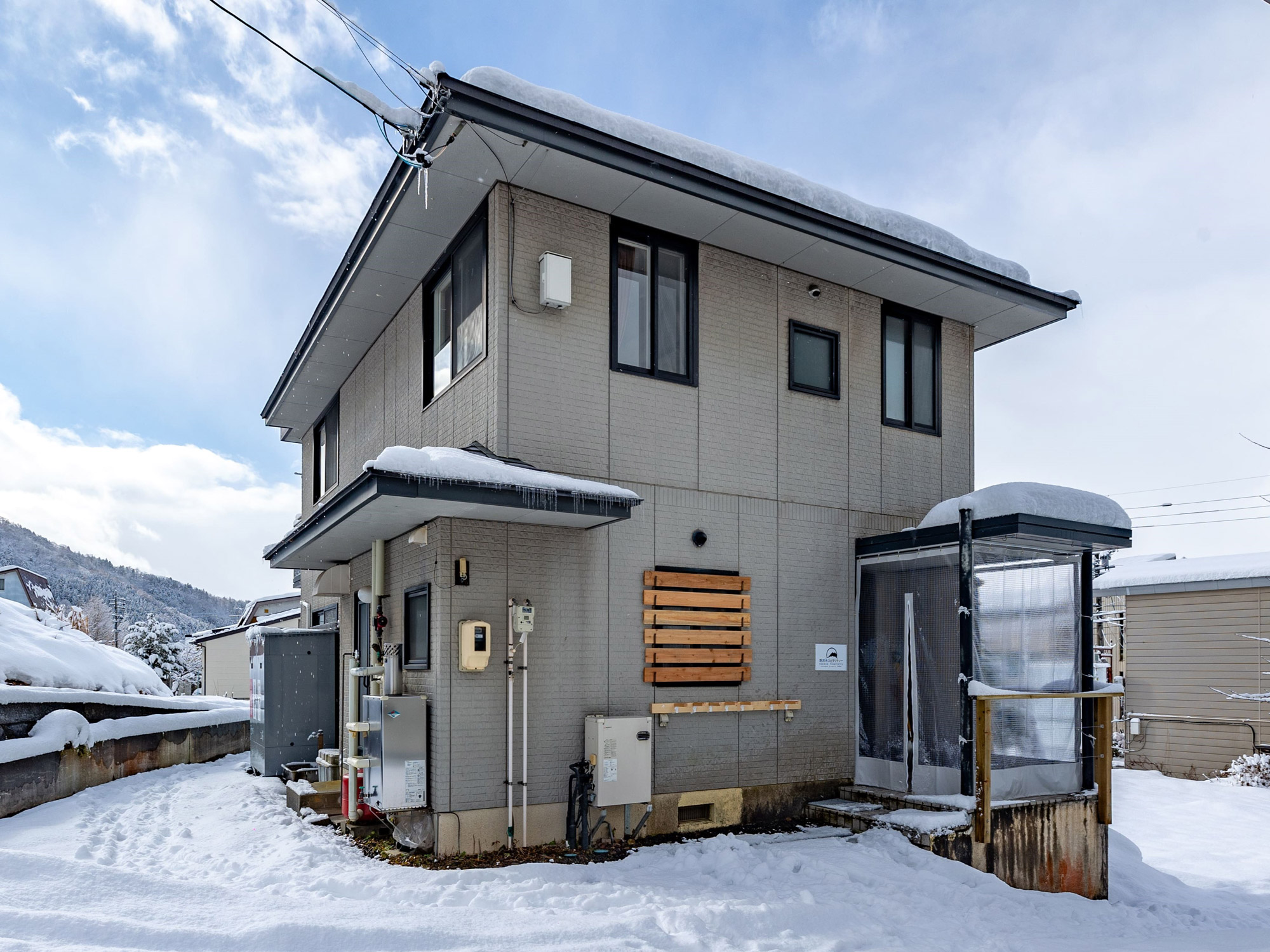by Kazuo Uehara, a local editor
Photo credits: Shinichi Kubota
Festivals are the Life of the Village
Many matsuri, or festivals, have been held to bring the village together in greater unity in response to the important role of the village to jointly manage the mountains, water and the like crucial to farming and everyday life. In Nozawa Onsen, the unity and cooperation among villagers was extremely important to protect the onsens as an important asset of the villagers.
To pray and be grateful for a good harvest, to pray for the birth and growth of children, to pray for a happy marriage, to pray for safety from illnesses and disasters, were prayers shared by all villagers, and such prayers were reflected in the festivals.
In addition, these festivals encouraged people to cooperate in preparing for and holding the festival, and to pass down important techniques and knowledge. They also provided a place for releasing energy as an entertainment event.
In Nozawa Onsen, Yuzawa Shrine's Lantern Festival in autumn and Dosoujin Fire Festival in winter have been held with great enthusiasm.
In this post, we'll talk about Dosoujin Fire Festival.

Younger Generation at the Center of Festivals
In the past, the village matsuri were led by five groups of young men and boys, according to age. The oldest group in charge of leading the matsuri were 20 to 22 years old, the second 17 to 19 years old, the third 14 to 16 years old, the fourth 11 to 13 years old, and the last group, 8 to 10 years old. Each group had a different role.
The scheme was designed to foster skills among the men enabling them to play a prominent role in leading the village in the future, through cooperating with members of a similar age and successfully achieving the responsibilities assigned to them.
Dosoujin Fire Festival
The Dosoujin are the ancient gods of borders and paths, and are found at village boundaries to keep out bad things such as epidemics and evil spirits. The wishes of villagers began to be incorporated in the Dosoujin, including the blessings and healthy growth of children, happy marriages and good harvests. Dosoujin can be found nationwide, and are often represented in various shapes such as stones with carved characters or images of a male and a female, and a festival is held as an event on the 14th to 15th days of the first month. In the same way as the customs of new year decorations and burning household amulets, the event held the meaning of bringing good fortune to the new year by driving away evil spirits with sacred fire. There were also various other beliefs: the higher the fire reached when burning kakizome (a special piece of calligraphy for the New Year) the more fortunate, and the better your handwriting will become, and also, if you eat dango (sweet rice dumplings) or mochi (pounded rice) cooked in this fire, you would not catch a cold.
Until the end of the Meiji period, Nozawa Onsen's Dosoujin Fire Festival was held in two different locations. The location in front of Sakakiya was called the "upper God" and the location in front of Yuzawa Inn was called the "lower God," and each built a Shrine Pavilion with a sense of competition and display of high spirits.

In 1912, the police warned that starting a fire near homes was dangerous, and after discussion among the villagers, they came to an amicable decision to use the "upper God" farmland owned by Mr. Katagiri as the festival site, and to start the original fire at the "lower God," the Kono family home.
In the same way as the Lantern Festival, the Dosoujin Fire Festival was led by five groups of young men.
However, young men had to leave the village to fight the war as soldiers, and as there was also a shortage of buna trees which were being delivered as lumber, it became difficult to continue the festival. After the war ended, the group of young men disbanded. (More about buna trees in a separate post!)
In 1955, Seiji Azegami of Nozawa-gumi Soudai took charge. Worried that the long-established tradition of the Dosoujin Fire Festival would disappear, in lieu of the groups of young men, he asked yakudoshi sanyako group members, comprising men of three age groups between 40 and 42, and young yakudoshi men of 25 years of age to continue the fire festival. All parties happily accepted, and this organization continues to date.
As can be seen in the dosoujin song with the lyrics "it's great to have friends," there is a tradition of valuing friendship (classmates or yakudoshi team), and this has provided strength to the organization to continue the Dosoujin Fire Festival.
Sacred Tree logging
The sacred trees and beams used for the fire festival are logged from the Dosoujin forests jointlv owned bv villagers. Until mid-1965, the trees and beams were lumbered in the snow on January 13 and taken straight out of the mountain to hold the tree ceremony, carrying the trees to the Dosoujin Festival site. Bv noon of January 15, thev go back and forth repeatedly between the forests and the Dosoujin site.
Currently, the work starts with collecting grass for burning in the previous year, and the lumbering and tree ceremony leading to Hikage ski field is done in mid-October. Five straight buna trees with a diameter of about 30 centimeters and height of about 18 meters are selected.
First Lantern

In Nozawa Onsen, when the first boy is born, the family builds a "first lantern." Lantern decorations are hung around a pillar nine meters high. The upper half is made of cedar, while the lower half is made of mizunara, a Mongolian oak wood. Starting from the top and extending toward the bottom, a sacred cloth and an umbrella-shaped cover are hung. From the umbrella, a cloth with the family's crest is also hung, and under the cover, there are a round lantern with bells, a white folding fan, and a hanging cloth decoration. Below this is a bowl-shaped split bamboo, with paper flowers decorating the bamboo strips, with a mandoro (type of lantern) hanging inside. At the very bottom, pieces of New Year's calligraphy written by local children and children of relatives are hung around the lantern. On January 15th, a crowd of people singing Dosoujin songs carry the first lantern to the Dosoujin site. The first lantern built atop the site is offered up to the Shrine Pavilion in flames with the wishes that the first born child will grow up healthy, burning high into the sky.

Dragging of Sacred Trees
Two of the sacred trees that have been logged in autumn are carried from the Hikage ski field to the Dosoujin site, by the two yakudoshi-age groups of 42 and 25 years old. Getting around narrow streets and sharp turns is especially challenging. Families along the route offer sacred sake, adding to the festive atmosphere.

Constructing the Shrine Pavilion
The majestic shrine pavilion stands tall at seven meters, and from the upper section, the sacred trees protrude another 10 meters or so. The top platform is eight meters square, equivalent to nearly 40 tatami mats. The construction of the pavilion can be dangerous, so consuming alcohol is prohibited, and members work seriously until construction is complete. Work continues late into the night of January 14, and is completed in the morning of January 15.

Original Flame and Fire Battles
Six yakudoshi representatives receive the original flame lit by the Kono family. The flame is kindled by striking metal on flint, and then huge torches are fired up. The flame is brought to the site while singing Dosoujin songs. Battles start at around 8:30 pm in the evening, when the person in charge uses the original flame to light up torches for attacking the pavilion. It is the role of yakudoshi men to put out the fires -the 42-year old men defend the upper part of the pavilion, while the 25year-old men defend the lower part.


Azuki-yaki Fortune-telling
After the fire festival, embers are brought from the Dosoujin site to light charcoal in an irori (hearth). An earthen vessel is placed over the fire, and when this turns bright red, three beans each are placed on the vessel, and the fortune of various matters is judged according to the movement of the beans.
Important Intangible Folk Cultural Asset
On December 12, 1993, the Nozawa Onsen Dosoujin Festival was designated as an Important Intangible Folk Cultural Asset, as one of the most representative Dosoujin events in Japan. It has been recognized as a praiseworthy folk event, for its grand construction of the shrine pavilion, ornate first lantern and neat and pretty wooden dosoujin that have been preserved in the same style as in ancient times, and also for the cooperation among the villagers in holding the competitive and aesthetic fire festival in a spirit of unity.

The Nagano Paralympics Flame
In 1998, the Nozawa Onsen Dosoujin shrine pavilion appeared in front of the Nagano Paralympics opening ceremony venue, M-Wave. Until this point, the pavilion had never left the village, so the villagers had many discussions before deciding that they would cooperate and build a brilliant Olympic cauldron using the shrine pavilion as a motif.

Following actual traditions of the Dosoujin Fire Festival, the flame was lit at the Tokyo Metropolitan Yoyogi Park by Mr. Kono of the Kono family that provides the original flame, which was then carried by relay runners to M-Wave where the flame atop the pavilion was lit at the opening ceremony. This scene was broadcast across the world.
To commemorate this occasion, the following year a cauldron banner was displayed in front of the Nozawa-gumi Soudai office, and a monument for the Paralympics flame was built next to the Dosoujin statues underneath the banner. Every year, more and more overseas visitors attend the Dosoujin Fire Festival on January 15th.







-min.jpg)



.jpg)


.png)

.png)
.jpg)
















%20(1).jpg)
















.png)













